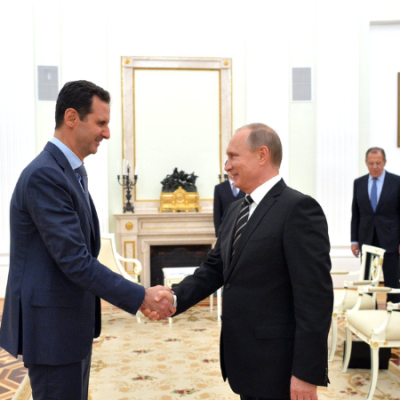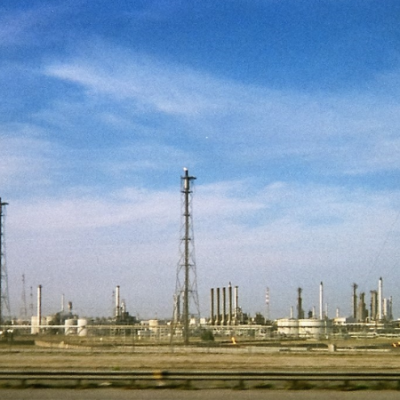Iran-Taliban Dispute for Water! What is This?

The distribution of water from the Helmand River has been the subject of a protracted argument between Iran and Afghanistan.
Also Read – UN watchdog IAEA closes two probes at Iran nuclear sites
The distribution of water from the Helmand River has been the subject of a protracted argument between Iran and Afghanistan. Recently, there were clashes near the border.
Last week, heavy gunfire between Iran and the Taliban took place on the Islamic Republic’s border with Afghanistan, killing one soldier and injuring another while sharply escalating already-rising tensions between the two nations.
Both parties charged one another with firing first
The conflict occurred as tensions over the Helmand River, a crucial water source for both Kabul and Tehran and a source of water for the region’s ecosystems, livelihoods, and agriculture, were rising between Kabul and Tehran.
For more than a century, there has been a dispute between Afghanistan and Iran regarding the sharing of river water.
The Helmand River is the longest in Afghanistan. Before emptying into Lake Hamun on the Afghan-Iranian border, it travels about 1,150 kilometers (715 miles) through desert regions near Kabul and the western Hindu Kush mountain range.
The largest freshwater lake in Iran is Lake Hamun. It once covered 4,000 square kilometers (1,600 square miles) between Iran and Afghanistan and was one of the most extensive wetlands in the world, fed by the Helmand.
But it has since dried up, a trend that experts attribute to the drought and the effects of dams and water management measures.
The lake has a significant impact on the local economy and environment.
What do Kabul and Tehran accuse one another of?
The Helmand River Treaty, which was signed by Iran and Afghanistan in 1973, set rules for the distribution of river water. But because the agreement was neither ratified nor fully implemented, disagreements and hostilities continued.
Iran claims that Afghanistan has been abusing its water rights by supplying far less water to Iran than was agreed upon in the 1973 treaty.
Hassan Kazemi Qomi, the Iranian ambassador to Afghanistan, stated last week in an interview with the state-run Tasnim news agency that Iran only received 4% of its share of the river water last year.
Iran’s accusations have been refuted by Afghanistan, which emphasizes that the situation is due to climatic factors such as a lack of rainfall, which has led to decreased river water volumes.
Afghanistan’s development of dams, reservoirs, and irrigation systems along the Helmand River is a major source of worry for Iran. Tehran worries that these projects will lessen the flow of water into Iran.
However, Kabul argues that increasing water storage and irrigation capabilities within Afghanistan is within its rights.
How are relations between Tehran and the Taliban?
A 950-kilometer land border separates Iran from Afghanistan. No significant territorial disputes exist between the two nations.
Before the Islamic fundamentalist group took control of Kabul in August 2021, when US and NATO troops were nearing the end of their withdrawal from Afghanistan, Tehran had developed cordial relations with the Taliban.
Both sides shared the opposition to the US presence in the region.
Iran has been pragmatic and has kept its relations with Afghanistan’s current leaders even though it hasn’t formally recognized the Taliban government to date.
To accomplish objectives like preserving Lake Hamun, Tehran needs to have a close working relationship with Kabul.
But there have been numerous incidents at the border since the Taliban took over.
“Tehran hosted a Taliban delegation six months before the Taliban took over, partly to reach agreements on water rights. As of late, the Taliban appear unwilling to uphold those agreements, according to Afghan environmentalist Najib Agha Fahim.
Fahim was a minister in President Ashraf Ghani’s administration, which fell in August 2021 and was in charge of dealing with natural disasters.
He emphasized the need for a long-term resolution to the water dispute.
To accomplish this, officials and subject matter experts from the two nations must collaborate more closely and share information to calculate the amount of water that is available and the amount that has flowed into Iran.
“Both sides are looking for quick fixes”
According to Nik Kowsar, an Iranian environmental expert based in the United States, neither Tehran nor the Taliban are interested in resolving the region’s environmental issues or addressing the mismanagement of water resources.
“Both sides are looking for short-term solutions and want to solve their internal problems,” he claimed. He continued, “The Taliban want to promote agriculture.” “And after the widespread protests last year, the government in Tehran is behaving as if it suddenly cares about the underdeveloped province of Sistan-Baluchistan.”
The expert was referring to the widespread protests and political unrest that followed the passing of 21-year-old Jina Mahsa Amini while the police were holding her.
Demonstrators in Sistan-Baluchistan are still demonstrating against the political system despite a harsh crackdown.
The drought-stricken province, one of the poorest regions of the nation, depends heavily on the water resources of Lake Hamun.
According to Iran’s parliament, the lack of water has caused 25% to 30% of the population to relocate to the suburbs of cities in other regions over the past 20 years.
What is the situation right now?
Due to water shortages and other economic and social issues, public resentment has already been growing in the eastern Iranian region. The tensions were also raised by the most recent battle between Iranian and Taliban forces.
The deputy head of the Iranian police and the commander of the Iranian army’s ground forces visited Sistan-Baluchistan on 28 May and declared that the situation was under control.
A commission of inquiry will be established by Tehran and Kabul to determine what took place during the border shootout.
Given that three Iranian soldiers have died, there is much rage in Iran.
Brigadier General Amir Ali Hajizadeh, head of the Iranian Revolutionary Guard Air and Space Forces, said on May 29 at a gathering at the Iran University of Science and Technology in Tehran, “Some people wish for a war against the Taliban.”
Also Read – IAEA terminated two lines of inquiry into Iran’s nuclear programme
But Hajizadeh added, “Our adversaries are behind these provocations. “They intend for these border clashes to spark a war. There is no chance that it will occur



